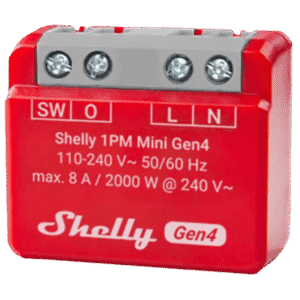Intro
Most of us started our smart home journey by buying a couple of Wi-Fi devices, connecting them to our home router and installing it’s proprietary app. Easy!
But, as our home network grows and we experience frequent disconnects, network clutter, higher power consumption, connectivity issues, we start to think that Wi-Fi is not the way to go. There must be a better way to connect things and build a more stable and robust smart home!
In comes ZigBee, a low latency mesh network communication protocol!
What is ZigBee exactly?

ZigBee is a low powered wireless communication protocol operating on the IEEE 802.15.4 radio standard typically used on the 2.4GHz frequency band. It’s main advantage over Wi-Fi IoT devices is the capability of building strong mesh networks using routers, which in turn reduce downtime, disconnects and improve overall stability.
In other words, Wi-Fi devices are using point-to-point communication for data transfer (ex. Smart Bulb to router), whereas ZigBee can send data packets through any of the installed routers, thus extending range significantly (ex. Door Lock to Smart Plug to Wall Switch to Coordinator.)
ZigBee Pros
- Low latency when implemented properly (within a strong mesh network)
- Low power consumption (battery-powered devices are capable of enduring years)
- High number of end nodes within a single network (up to 65000)
- Expandable range with router devices (can easily cover a huge house on a single coordinator)
- Flexible network (e.g. if a router device goes offline, traffic is rerouted through the nearest mains powered device which maintains stability)
ZigBee Cons
- Requires knowledge of the system for operating zigbee compliant devices
- Susceptible to network interference, the 2.4GHz band is also used by Wi-Fi and Bluetooth
- Low transmission rate, not suitable for transferring large amounts of data
- Is not directly compatible with mainstream consumer electronics like PCs, Laptops etc.
- A bit higher cost of implementation than Wi-Fi
Is ZigBee a replacement for Wi-Fi?
Many people ask this question, and the answer is: now quite. The two protocols can and should be used together. If you are planning to implement a lot of smart home gadgets and gizmos, than you should focus towards ZigBee and building a strong mesh network. As you probably have many home devices already using Wi-Fi (PCs, Macs, Mobile Phones, Laptops, Smart Speakers etc.), network congestion will become a problem if you stick to Wi-Fi only.
The Future of ZigBee
As Matter is around the corner, the ZigBee Alliance that founded the protocol back in 2002, has rebranded itself into CSA – Connectivity Standards Alliance. They aim to make Matter the IoT devices communication protocol of the new smart home era. And ZigBee is the pathway to Matter.
ZigBee devices will not disappear overnight though, as companies producing ZigBee devices have promised software updates to their devices and hubs that will link the two together.










Comment